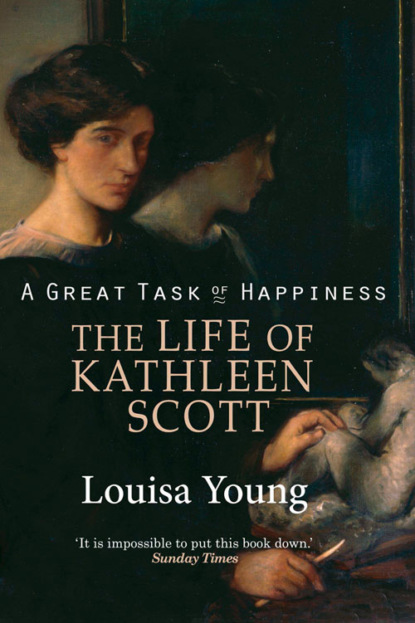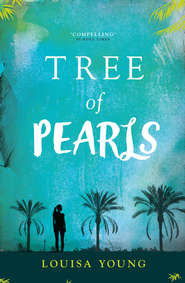По всем вопросам обращайтесь на: info@litportal.ru
(©) 2003-2024.
✖
A Great Task of Happiness: The Life of Kathleen Scott
Настройки чтения
Размер шрифта
Высота строк
Поля
5.1.05. Dom-Hotel Cologne
SHE : Isadora has decided that the father of her child shall be the man she loves.
HE: A world of thought can be given to this.
‘In after years,’ Kathleen wrote, ‘when the War had given different values to these things, she said, and probably believed, that she had done this thing deliberately, and was proud of her courage and independence, but at the time she was still nothing more than a very frightened girl, frightened and pitiful.’ Isadora did have her ideals. When asked about ‘free love’, she had written: ‘Of course, people will respond, “But what about the children?” … How can a woman go into this marriage contract with a man who she thinks is so mean that, in case of a quarrel, he wouldn’t even support his own children? If she thinks he is such a man, why should she marry him?’ Which is all very well, except that Craig was not supporting his—in fact his mother was supporting him with £500 a year.
By March 1907 Isadora’s eyes had been opened enough for her to write to Craig: ‘Why the very Goo of a baby makes you look for a Time Table book’, but at this stage she was full of romance and idealism, and once pregnant she put a brave and cheerful face on to her conflicting and socially unacceptable desires. She can hardly have known that she was already pregnant when in January 1906 she wrote to Craig: ‘I wish you would know that in all the hundreds of times you have kissed me there hasn’t been one that every thing in me hasn’t cried out—make me fertile—give me a child— not once—I have always had that constant longing, impossible to control.’ She dreamt that ‘Ellen Terry appeared to me in a shimmering gown… leading by the hand a little blonde child, a little girl who resembled her exactly, and, in her marvellous voice, she called to me—“Isadora, love. Love… Love.” The divine message sang in all my being. I continued to dance before the public, to teach my school, to love my Endymion.’
Her great love and laissez-faire indulgence allowed her to see the best in Craig. Though she worked extraordinarily hard, travelling all over Europe and feeling that she ‘lived on railway trains’, and though her earnings were helping to keep him while he was incapable of making any practical link between the talent he had and the money he needed to live on, he would say to her, ‘Why don’t you stop this? Why do you want to go on the stage and wave your arms about? Why don’t you stay at home and sharpen my lead pencils?’ And in the same breath she writes, ‘And yet Gordon Craig appreciates my art as no one else has ever appreciated it…’ No doubt he did, in some way. And Isadora was herself perfectly capable of being dismissive of the work of others. Kathleen had fallen ill (three days of high fever due to overstrain, said the doctor) during a visit to Isadora at the Hague in November 1905, and Isadora had no respect for her anxiety about ‘some statue whose clay will crack if she doesn’t get back’.
So in the summer of 1906 Kathleen found her friend at Noordwijk, in a white house with a white shell garden among the sand dunes. Isadora told Kathleen that she was all alone, that she hadn’t told even her family of her situation; but Isadora was not above a little emotional blackmail. Her family did know, and her mother thought she should be married. ‘But she had been married, had found it impossible, and had divorced her husband. Why should she want me to enter the trap where she had been cruelly bitten?’ Isadora wondered. She turned instead to Kathleen, the ‘nice quiet English girl’, as Isadora described her to Craig, ‘very sweet and gentle’.
‘Kathleen was a magnetic person, filled with life and health and courage,’ Isadora wrote later, but those qualities were not to the fore when Isadora’s story first came out. Kathleen, initially, was shocked.
I was torn and shattered. All my inborn prudery, strengthened by the convent upbringing, was terribly affronted. The sad queer happenings in the Balkans served not at all to soften this present experience. The girls of my nightmare winter there were of a so completely different civilisation that they had seemed like lovely wild animals. But here was the dancer, my friend, with an education limited indeed, it is true, but speaking my language, sharing my acquaintances, with recognizable ambitions and ideals. It was a shattering blow to me, who found exultation in audacious defiance of convention coupled with an assured control. So loudly and arrogantly had I proclaimed that complete independence for a lass was fraught with no dangers whatever, given there was character and intelligence to back it. I was very young. Daughters were still living with their mothers in dutiful subjection. Well, here then was a situation to be grappled with. My pseudo maternal heart hit my head a sharp blow. ‘Get on with the job.’
‘Daughters were still living with their mothers,’ she wrote, to define the nature of propriety. She of course was not living with her mother, and never had. She was undoubtedly aware that to be as independent-minded as she was was quite unusual, but it is not clear that she yet associated her independence with her orphaned state. She was certain that there were no dangers for her; she was interested not so much in the nature of female independence as its fruits. And to find Isadora bearing such fruit as this was quite extraordinary to her. Sexual freedom, as an option, seems hardly to have crossed her mind before. Now that it did, ‘character and intelligence’ precluded it for her, and at the same time required her to ‘get on with the job’ for her foolish, as she saw it, friend. Perhaps she felt that Isadora had in some way let down the ideal of female independence by ending up in ‘the worst possible plight’.
Vicariously I figured myself the mother of Isadora’s son. It never occurred to me that the expected baby could be other than a son. For the health of this future son, the mother must be cheered and cared for. I would not let Isadora see that I was shocked, yes, quite simply and honestly shocked. Never did I let her suspect my rather mean fear lest any of my common-place standard-moraled relations should hear of my aiding and abetting, with sympathy and capacity, the arrival of an illegitimate child of a dancer. In my head I could hear the scorn with which those last words would be bandied from naval mouth to military, from military to clerical, from clerical to old maids’. ‘It is easy,’ I thought, ‘to have the courage of one’s convictions, but these are not my convictions. Well, I must have courage all the same.’
The life they led at Villa Maria was ‘queer and anxious’. The wind blew all the time, gently or in such storms that the house, in Isadora’s words, ‘was rocked and buffeted all night like a ship at sea’. Isadora sewed baby clothes and wrote cheerful letters to Craig, who had gone to London to visit his other pregnant mistress, Elena Meo. In one letter Isadora all but invites him to bring Elena with him to Villa Maria: ‘If there is anyone you care for very much who feels unhappy and wants to come with you she can have half my little house with all my heart. It will give me joy—and Love is enough for all.’ Sometimes Isadora was peaceful, but at others ‘a fierce cloud of doubt, fear and loneliness would descend upon her… and she would cry for death and plan her suicide.’ Kathleen would cheer Isadora with tales of future triumphs, and herself with the thought that people who talk of suicide are not usually the ones who go through with it.
Adding to the strangeness of the situation was the attention of the press— Kathleen’s first experience of it, though later she would come to know it well. The story of Isadora’s pregnancy had got out, along with rumours that she and Craig were married. (Craig quoted, rather aptly, of the press: ‘One said he was married, and the other he said nay, he’s just a blooming lunatic that wants his blooming way.’) A reporter had tracked Isadora down, and though he was refused an interview he remained hanging around the house. This added to Isadora’s misery, and to get rid of him and scotch the rumours she asked Kathleen to dress up in Isadoraesque drapery and run and dance on the beach in a very unpregnant fashion. Kathleen did it, to her ‘uncomfortable shame’. Later that night, in the small hours, Isadora walked out to sea. Kathleen woke with the sense that all was not well, and followed the trail from Isadora’s empty bed to the open front door to the lonely beach. The sea was calm, and there was the dancer standing in the water, with a gentle, dazed look, a faint childish smile, saying, ‘The tide was so low, I couldn’t do it, and I’m so cold.’ Kathleen led the fully-dressed Isadora out of the water and back to the house where she warmed her and rubbed her and fed her hot drinks and put her to bed.
That night was the low point. Soon afterwards Craig made his appearance, and everything changed. ‘Isadora’s lover arrived without heralding, to stay we knew not for how long. Isadora was radiant and masterful. He was to be treated as a Messiah, everything was to fall before his slightest wish. Our simple fare must be supplemented, wine must replace the customary milk, everything must be turned to festival.’
Kathleen’s first instinct was to fly. She says that the reason she did not was because of loyalty to the unborn child, her vicarious son, but she would have been rare indeed if she had had no curiosity about Craig, and had felt nothing at all of his notoriously attractive energy and intelligence. Almost certainly she was a little jealous. Whatever the reasons, ‘I felt I must submit to the presence of this thoroughly inappropriate father. Physically, I was bound to own, he was not altogether inappropriate. He was tall and well-built, with a mass of long, thick, golden hair, just beginning to turn grey. He had good features, high cheekbones, and a healthy colour. Only the hands with the low bitten nails betrayed the brute in him.’ Isadora mentioned the nails too; when ‘poor Craig was restless, unhappy, [he] bit his nails to the quick exclaiming often “My work. My work. My work.”’
He was gay, amusing, argumentative [continued Kathleen]. Only once or twice did wild outbursts of uncontrolled temper pass with a wave of terror through the little villa. And I, ever mindful of the little life, wondered whether it were taking any harm from these distressing scenes. Isadora herself remained externally beautiful and serene. Endowed always with an abundance of generosity to those about her, she seemed now ready to forgive, to condone, to accept, and to give herself up to ministering to this unbridled child of mature age.
There was one moment, at least, when Kathleen liked Craig. Live lobsters had been sent for, ‘to feed the rare brute well’, and put in a pail overnight. In the middle of the night Kathleen was woken by hair-raising noises, and rushed downstairs fearing suicide, murder or worse. The whole household had been raised, and they peered nervously round the pantry door to find that the lobsters, having upturned their pail, were amusing themselves by shattering all the crockery that shared their shelf. In the hysterical merriment, born of relief, which followed, they were all for a moment united.
Craig left, and Isadora’s time came. A telegram was sent to Craig in Rotterdam and he returned. Kathleen’s diary gives the bare and brutal bones.
22 Sept 1906: (Sat) 1. woke me at 5. Dilation pains begun. Got into bed with her and lay there till 8. Got her up—breakfast and a little walk.
23 Sun: Isadora got up suffering 2.30. Tried to walk outside—awful. Sitz bath—tremendous relief. 11.30 went to sleep.
24 Mon: 2 a.m. woke. Sitz bath. Labour began. 4.30 woke Ted [Craig] went for Dr Van Nes. 5 came Dr. Slept 5 till 8. About 10.30 forehead appeared. 11:15 pulse weakened, instruments—no time for chloroform. Alive—rupture to rectum … stitches. Placenta easy— buried it in sand.
25 Tues: Nurse Kist arrived. 12 walked with Ted to Nordwyck Binnen to buy things. 10pm, found her flushed. Went to interview Dr at his house. He said possibly never dance again and certainly not for 8 weeks.
Later Kathleen wrote a fuller version:
The local doctor, a little fat middle aged Dutchman with a stubbly beard, arrived with a black handbag containing, he said, anaesthetic; this, however, he left in the hall, both then and later. Then followed the most terrible hours that I had ever experienced. I had seen and heard things grim enough in the mountain hospital, but here must be, I thought, the ultimate agony. Hour after hour I held the hands, the head, the writhing body, the same hands and head and lovely body that has held European audiences enthralled. The cries and sights of a slaughterhouse could not be more terrible…
Isadora said later that no woman who had ever had a child would have any reason to fear the Spanish Inquisition:
It must have been a mild sport in comparison. Relentless, cruel, knowing no release, no pity, this terrible unseen genie had me in his grip and was, in continued spasms, tearing my bones and sinews apart. I have only to shut my eyes and I hear again my shrieks and groans … And for two days and two nights this unspeakable horror continued. And on the third morning, this absurd doctor brought out an immense pair of forceps and, without an anaesthetic of any sort, achieved the butchery.
Kathleen tried to get the doctor to administer the anaesthetic he had in the hall, but ‘he seemed to reply only that there wasn’t time; he could not leave her to get it ready; and so the frenzied agony went on and on and on.’
Not unusually for the time, Kathleen felt that an artistically sensitive person suffered more pain than a philistine, and Isadora believed that the more civilized the person, the more fearful the agony. She thought it a nonsense to speak of any kind of female emancipation until ‘this operation of childbirth, like other operations, shall be made painless and endurable’, and could not forgive ‘the unspeakable egotism and blindness of men of science who permit such atrocities when they can be remedied’. Kathleen, writing in 1932, expressed great relief that among the changes in women’s lot this suffering, at least, was no longer expected of them.
And after the frenzy, the agony, the two days and two nights of unspeakable horror, there was the baby. ‘It was unhurt by it all,’ wrote Kathleen. ‘It was perfect. I turned from the horror with joy to the tiny miraculous object.’ She had a brief, fleeting moment of jealousy that it was not her son, and then a moment of shock that it was not anybody’s son, but a little girl. But soon she was ‘tending and purring over the queer little atom with that love that passes all understanding, the love of a woman for a newborn babe’. The mother herself felt ‘this tremendous love, surpassing the love of men. I was stretched and bleeding, torn and helpless, while the little being sucked and howled. Life, life, life! Give me life! Oh, where was my Art? My Art or any Art? What did I care for Art! I felt I was a God, and superior to any artist.’
Вы ознакомились с фрагментом книги.
Приобретайте полный текст книги у нашего партнера:
Приобретайте полный текст книги у нашего партнера:











